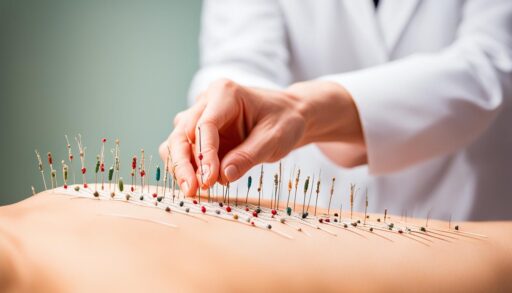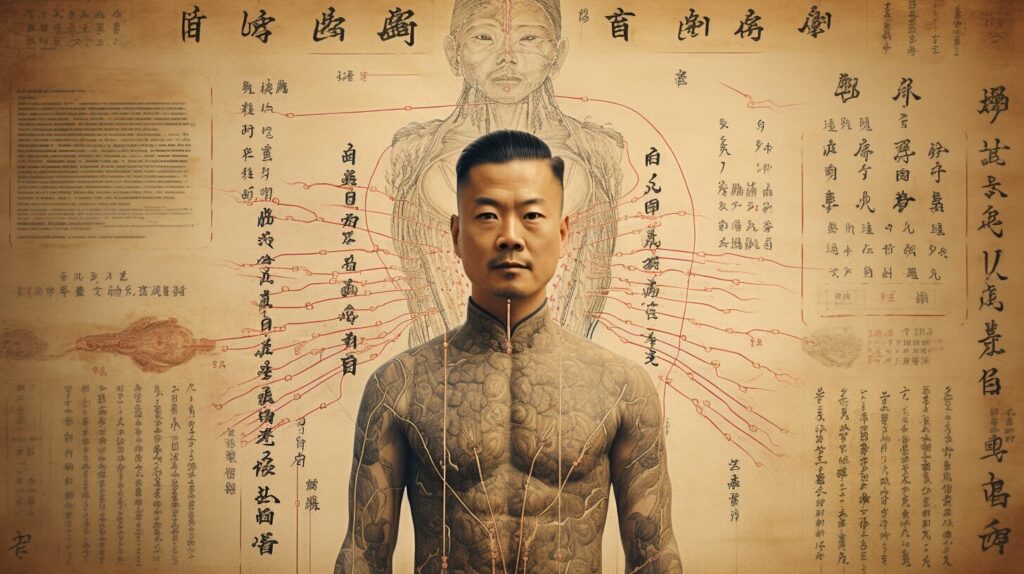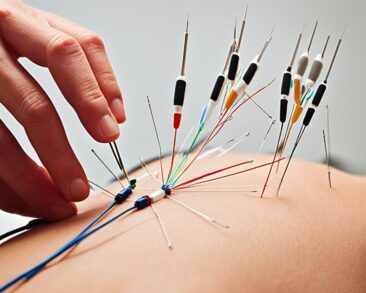Acupuncture Points
Imagine being equipped with a roadmap to your body’s self-healing mechanism, a guide that reveals not just the wonderful complexity of your body, but also its propensity for self-repair. The ancient Chinese practice of acupuncture has, for centuries, used such a roadmap. In your journey through this article, “How Acupuncture Points Activate the Body’s Self-Healing Mechanism,” you’ll discover how strategic stimulation of specific acupuncture points can trigger your body’s healing processes. Here’s to a journey of discovery into the inner workings of your fascinating body!

Understanding Acupuncture
Understanding the ancient art of acupuncture begins with peeling back centuries of history. This fascinating practice has intrigued healers and patients alike for thousands of years, and continues to be a topic of intricate study and research today.
Historical Context of Acupuncture
Long before the modern age, even before the advent of written language, there existed an understanding of the body’s innate ability to heal. Acupuncture is a form of traditional Chinese medicine that has its roots in ancient China, dating back over 2,500 years. The Yellow Emperor’s Inner Classic, an ancient Chinese medical text, serves as one of the first records of acupuncture existence, detailing various diseases, treatments, and acupuncture points.
Principles of Acupuncture
The fundamental principle of acupuncture revolves around the balance of Yin and Yang, two opposite yet complementary forces. Acupuncturists believe that good health is the result of a balance between these forces. Imbalance, on the other hand, leads to disease. Acupuncture is the application of needles to specific points on the body to restore this balance, channeling the energy flow, or Qi in the right direction.
Modern Acupuncture Practices
In our modern world, the practice of acupuncture has evolved, incorporating contemporary knowledge and techniques. Although the fundamental principles remain the same, newer techniques include electroacupuncture, laser acupuncture, and microsystem acupuncture. Irrespective of the technique, the primary aim remains to restore the body’s harmony and enhance its natural healing properties.
Acupuncture Points and Their Significance
Understanding acupuncture points, often referred to as ‘acupoints’, is crucial to grasping the concept of acupuncture.
Definition of Acupuncture Points
Acupuncture points are specific points on the body’s surface which, when stimulated, can affect various physiological and psychological functions of the body to facilitate healing.
Location of Key Acupuncture Points
There are around 365 classical acupuncture points, all strategically located along the body’s 14 primary meridians or energy pathways. Some of these key points include the large intestine, liver, spleen, heart, and lung meridians.
Role of Acupuncture Points in Treatment
Each acupuncture point corresponds to a specific ailment or bodily function. By stimulating these points, an acupuncturist can correct imbalances in the body, trigger specific biological responses, and facilitate relief from several conditions including chronic pain, stress, and insomnia, among others.

The Role of Qi in Acupuncture
The concept of Qi, pronounced ‘chee’, is central to understanding acupuncture. It provides the philosophical basis for acupuncture practice.
Definition of Qi in Traditional Chinese Medicine
Qi, in traditional Chinese medicine, denotes vital energy or life force. It circulates through the body via channels or meridians helping maintain health and vitality.
The Concept of ‘Blocked Qi’
When the flow of Qi is obstructed, or ‘blocked’, the body’s equilibrium is disrupted. Blockages may be due to stress, trauma, poor diet, or other lifestyle factors, resulting in illness and discomfort.
How Acupuncture Helps Restore the Flow of Qi
Restoring the Qi flow is at the heart of acupuncture. By inserting needles at specific acupuncture points, practitioners stimulate the body’s energy system, unblocking any stagnation. This stimulation restores balance and catalyzes the body’s self-healing mechanism.
Anatomy and Physiology in Relation to Acupuncture
Understanding the relationship between anatomy, physiology, and acupuncture is key to uncovering the scientific basis of this ancient practice.
Understanding the Human Body According to Western Medicine
In Western medicine, the human body is viewed as a complex system made up of various organs and systems, each performing its own function. Disease is viewed as the outcome of these systems malfunctioning.
How Acupuncture Interprets Human Anatomy and Physiology
In contrast, acupuncture interprets the body as a network of interconnected meridians circulating Qi. Imbalances disrupt this circulation, leading to disease.
Points of Intersection Between Western and Eastern Medical Concepts
Despite their differences, Eastern and Western medical philosophy intersect at the concept of the body’s inherent ability to heal. Both philosophies believe in the body’s potential to restore its own precarious balance, with acupuncture working as a catalyst in this healing process.

Acupuncture and the Body’s Self-Healing Mechanism
As you delve deeper into the realm of acupuncture, it’s important to view the body as an incredible self-healing machine. Acupuncture, in essence, is a facilitator of this process.
Understanding Body’s Natural Healing Mechanisms
The human body is well-equipped to repair, regenerate, and heal itself. From a small cut to more significant systemic issues, given the right conditions and time, your body can often mend itself.
How Acupuncture Activates the Body’s Healing Process
The practice of acupuncture activates these natural healing mechanisms. It triggers a response in your body to release endorphins, natural painkillers, and stimulate blood flow and tissue repair at the acupuncture points.
Scientific Proof of Acupuncture’s Effects on Healing
Numerous scientific studies testify to acupuncture’s effects on healing. Research indicates that acupuncture can significantly alleviate chronic pain, improve psychological wellbeing, and enhance recovery post-surgery.
Acupuncture Techniques and Tools
Acupuncture therapy employs a variety of tools and techniques to stimulate acu-points and achieve therapeutic effects.
Types of Acupuncture Needles
Acupuncture needles come in different sizes, lengths, and materials. The most commonly used are stainless steel, gold, and silver needles. The needles chosen depend on the patient’s individual needs and the acupuncturist’s preference.
Techniques in Insertion and Manipulation of Needles
Techniques for inserting and manipulating acupuncture needles are vital to a successful treatment. These include various ways of handling the needle such as twirling, lifting, and thrusting. The depth of insertion and angling is also specific to each acupoint.
Using Moxibustion and Cupping alongside Acupuncture
Moxibustion and cupping are other therapeutic techniques often used alongside acupuncture. Moxibustion involves burning a small, spongy herb (known as mugwort) either directly or indirectly on the body to stimulate the acupoints. Cupping, on the other hand, involves creating a vacuum using glass or silicone cups on the body to enhance blood flow and promote healing.
The Procedure of an Acupuncture Session
Having a clear understanding of what entails an acupuncture session can often help dispel anxiety or misconceptions.
Initial Consultation
An initial consultation with an acupuncturist usually includes a comprehensive discussion about your medical history, current symptoms, lifestyle, and health goals. This discussion enables the practitioner to plan a customized treatment strategy.
Strategizing the Acupuncture Session
Based on the initial consultation, the acupuncturist devises a session strategy. This plan centers on the acupoints to be stimulated, the tools to be used, and a proposed timeline for the treatment based on your specific needs.
The Execution of the Acupuncture Treatment Plan
The execution of the treatment comes next. This entails inserting fine, sterile needles at specific points of your body. The needles are usually left for around 15 to 40 minutes while you relax, allowing time for your body to respond and start healing.
The Safety of Acupuncture
Understanding the safety profile of acupuncture is equally important.
Potential Risks of Acupuncture
When administered by a trained practitioner, acupuncture is relatively safe. Common, but minor, side effects include soreness and minor bleeding or bruising at the needle sites.
Situations Where Acupuncture May Not Be Advisable
Certain situations may warrant caution, such as pregnancy or patients with blood clotting disorders. It’s always important to keep your acupuncturist informed about your complete health picture.
Regulations Governing Acupuncture Practice
Regulations overseeing the practice of acupuncture ensure the safety of patients. These rules stipulate the standardization of acupuncture needles, acupoint locations, and practitioner training standards, thus ensuring that acupuncture treatments are safe and effective.

Acupuncture and Chronic Diseases
The role of acupuncture in addressing chronic diseases is an emerging area of medical research.
Efficacy of Acupuncture in Treating Chronic Diseases
A growing body of evidence suggests acupuncture’s efficacy in managing chronic diseases like rheumatoid arthritis, fibromyalgia, migraines, and even cancer-related symptoms.
Case Studies of Acupuncture used in Chronic Illnesses
Several case studies present a strong case for acupuncture in chronic disease management. Patients with chronic diseases often report significant reduction in pain, fatigue, stress, and improved quality of life.
Future Research for Acupuncture to Treat Chronic disease
While much progress has been made, more research is needed to fully understand the mechanisms underlying acupuncture and its potential applications in treating chronic diseases.
Acupuncture in Modern Healthcare
Acupuncture’s place in modern healthcare systems is a mirror of its evolution, both as a practice and a scientific discipline.
Acceptance of Acupuncture in Western Medicine
Progressive acceptance of acupuncture in Western medicine reflects its proven therapeutic effects. Numerous health organizations, including the World Health Organization and the National Institutes of Health, acknowledge acupuncture as a valuable complementary therapy.
Integration of Acupuncture in Modern Healthcare Systems
Integration of acupuncture in modern healthcare is happening at various levels. From pain management clinics to cancer treatment centers, acupuncture is increasingly being incorporated to optimize patient outcomes and improve quality of life.
Future of Acupuncture in Medicine
As the body of research and acceptance grows, the future of acupuncture in medicine seems bright. Whether as standalone or adjunctive therapy, acupuncture holds promise in further bridging the call for holistic healing modalities in modern healthcare.
In telling the story of acupuncture, you journey through the annals of time, across cultures, and into the human body’s fascinating self-healing capabilities. As an integral part of holistic healing, acupuncture’s addition to modern healthcare systems brings hope, healing, and a better understanding of the body’s profound capacities.
